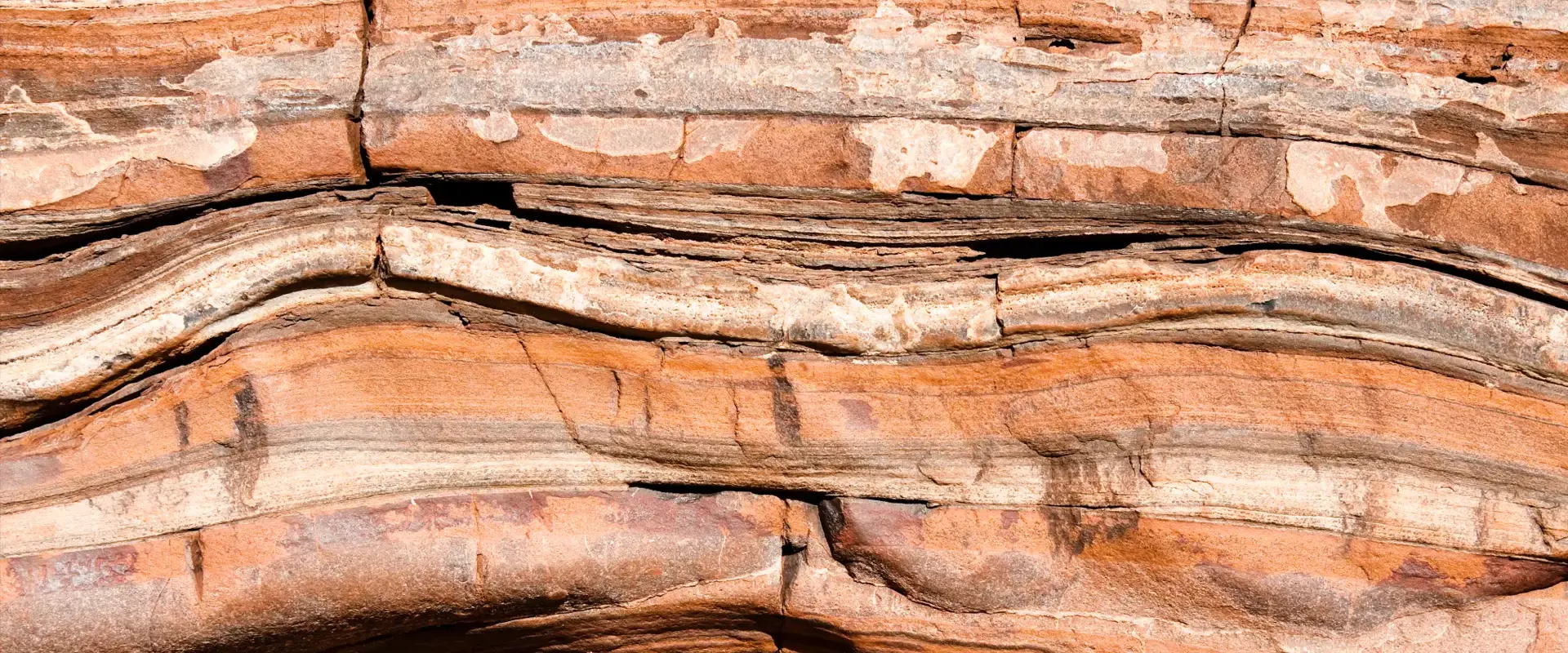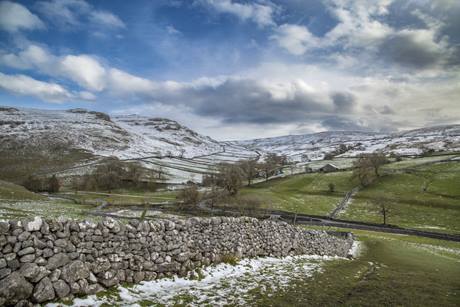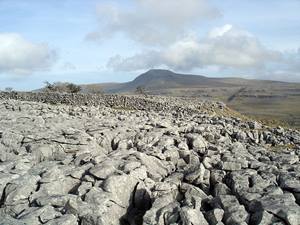
Yoredales, Yorkshire

The rocks found in the Yorkshire Dales serve as powerful evidence of the extensive movement of plates over geological time due to the variation in depositional environments that are found across rock exposures in the Dales in areas such as Ingleborough and Pen-y-ghent.
The older rocks exposed in the Dales are sedimentary siltstones that were deposited in a deep sea environment and are over 420 million years old. Above them, we find layered units of silt and sand. These were deposited by underwater flows of sediment-laden water called turbidity currents, which are often initiated by submarine landslides that occur when river output builds up along coastlines until the point of collapse. Submarine landslides and turbidity currents transport material down the continental slope to the deep-sea, depositing layers of well-sorted sediments called turbidites. Next in the succession are limestones, which were deposited over 100 million years later. Limestones are formed by the accumulation of the hard, shell and bone parts of ocean life that lived in warm, shallow seas.
 |
|
| Limestone stack in Pen-y-Ghent. © Steve Bayley |
The rapid change in depth of depositional environment from deep sea siltstones to the limestones formed in a shallow, warm sea is also evidence that sea level has dropped to uplift the rocks from the sea floor to the coastal continental shelf. This drop in sea level was due to the change in ice sheet volumes on the Gondwana palaeocontinent during the Carboniferous. Buildup of ice removed water from the oceans and caused a drop in sea level around the globe.
The addition of limestone to the succession not only suggests another change in environment of deposition to an even shallower water column but also a shift to a much warmer climate than the UK experiences today. In fact, geologists have calculated that during this time, Britain would have been approximately 5° south of the equator. This change in climate and environment of deposition is driven by plate tectonics over a geological time scale, causing continents to drift thousands of kilometres. Additionally, the shift from a deep sea environment of deposition to the continental shelf suggests that sea level has dropped to give rise to shallow water conditions.
 |
|
| Limestone pavement on Whernside: © Papa November |
After the shallow sea, Britain was further raised from the seas into a swampy coastline (and heading north of the equator). Rivers were interweaving through northern England, repeatedly changing course to cover or uncover different areas. The movement of these rivers caused alternating deposition of plant-rich swamp material and sands, which transformed to coal and sandstones, respectively, under heat and pressure. A swampy environment rich in tropical vegetation again shows migration of the plate Britain was located on, as swamps mainly form near but not at the equator. The largest swamp on earth today is the Patanal swamp, which covers parts of Bolivia, Brazil and Paraguay and is 16° south of the equator.
The swamp dominated environment of deposition ended, at least in Yorkshire, around 320 million years ago and very little sediment has been deposited since. However the succession exposed in places such as Pen-Y-Ghent shows us that Britain has emerged from the ocean and, passed through equatorial climates to cooler climates in the last 420 million years, not to mention the 3.6 billion years of British geological history before that, providing compelling evidence for the movement of continents over time.
Further reading:
The geology of the Yorkshire Dales
Yorkshire Dales National Park Authority
Twinned with: Antarctica
The rocks exposed in the Yorkshire Dales at Ingleborough and Penygent are sequences dominated by alternating layers of limestone, shale and sandstone. These rocks were laid down as the landmass passed through the equatorial zone in its long drift north from near the South Pole to the Northern Hemisphere. During this time, the sediments that now form ...continue reading
Related Links
- Dan McKenzie Archive
- The Rock Cycle
- Plate Tectonics schools website
- Plate Tectonics Glossary
- 100 Great Geosites: Gaping Gill
Further Reading
| Back to main stories page > |
Other sites
- Twin: Windward Isles
Cwm Idwal
- Twin: Mount Pinatubo
Sperrin Mountains
- Twin: Sierra Nevada
Southern Uplands
- Twin: Nankai
Ben Arnaboll
- Twin: Glarus Thrust
Outer Isles
- Twin: Tohoku Earthquake
Clogherhead and Shannon
- Twin: Papua New Guinea
Cairngorms
- Twin: New Hampshire Granites
Great Glen Fault
- Twin: North Anatolian Fault
The Lizard
- Twin: Troodos Ophiolite
Yoredales
- Twin: Antarctica
Stanage Edge
- Twin: Ganges Delta
Hartland Quay
- Twin: Zagros Range
Amroth-Saundersfoot-Tenby
- Twin: Salt Range, Pakistan
Vale of Eden
- Twin: East African Rift Valley
Zechstein
- Twin: Sicily
Alderley Edge
- Twin: Navajo Sandstone
Isle of Skye
- Twin: Mount Kilimanjaro
Lulworth Cove
- Twin: Albania
Giant's Causeway
- Twin: Cascade du Ray Pic
